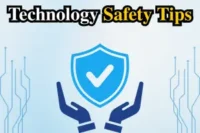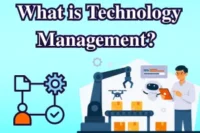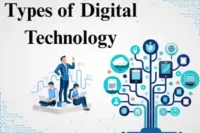What Is the Impact of Technology on Education Today?
Published: 06/Oct/2025
Technology is reshaping the world around us, and education is no exception. From digital tools to online platforms, the way students learn and teachers teach is changing faster than ever before. These innovations bring exciting opportunities but also introduce new challenges.
In this article, we’ll explore both the positive and negative impacts of technology on education and share practical tips to help students and educators make the most of it. So, let’s dive in.
The Positive Impact of Technology on Education
Technology is helping both students and teachers in many new ways. Here are some of the key benefits:

1. Improved Learning Access and Opportunities
Technology has made education more accessible and inclusive. With the internet and online platforms, students can now access study resources and classes from anywhere in the world. This breaks traditional barriers and gives equal opportunities to everyone, no matter where they live.
- Quick access to e-books, tutorials, and research papers
- Learn through educational videos, lectures, and digital libraries.
- Join online courses, webinars, and virtual classrooms.
- Study at flexible times that fit busy schedules.
- Access world-class education from platforms like Coursera, edX, and Khan Academy.
- Equal learning opportunities for students in remote or underserved areas.
2. Personalized Learning
Technology makes learning fit for every student. With adaptive tools and smart platforms, lessons adjust to match each learner’s speed and understanding. This makes education more effective and inclusive.
- Adjusts lessons to match students’ level.
- Provides extra help in tough subjects like math.
- Offers advanced topics for quick learners.
- Allows every student to learn at their own speed.
3. Enhanced Communication and Collaboration
Technology makes it easy for students and teachers to stay connected. Virtual platforms allow discussions, teamwork, and learning anytime, anywhere. This builds stronger collaboration in education.

- Stay connected through Google Classroom, Zoom, and Slack.
- Easy virtual discussions between teachers and students
- Smooth teamwork on group projects
- Collaboration across time zones and distances
4. Engaging Learning Tools
Technology makes learning more fun and interactive. With games, simulations, and VR, students can explore subjects in exciting and practical ways that bring lessons to life.
- Gamified tools make studying feel like a game.
- Simulations provide real-life practice.
- Virtual Reality (VR) offers immersive lessons.
- Understand science with 3D models of the human body.
5. Skill Development for the Future
Technology in education helps students build the skills they need for tomorrow’s jobs. By using digital tools and platforms, they gain practical knowledge that prepares them for the modern workplace.
- Learn coding and programming basics.
- Improve data analysis and problem-solving skills.
- Build confidence in digital communication.
- Practice with real-world tools like spreadsheets, coding apps, and design software
The Negative Impact of Technology on Education
While technology provides many benefits, it also comes with some challenges that affect both students and teachers. Here are the key negative impacts:

1. Distraction and Reduced Focus
The use of digital devices can sometimes distract students from learning. Social media, games, and notifications can reduce concentration and study efficiency.
- Students may get distracted by social media and apps.
- Online games and entertainment can take attention away from studies.
- Multitasking reduces focus and learning retention.
2. Overreliance on Technology
Relying too much on digital tools can reduce critical thinking and problem-solving skills. Students may depend on software or online solutions instead of learning concepts deeply.
- Overuse of calculators or software for basic tasks.
- Reduced ability to solve problems independently.
- Dependence on internet searches instead of research skills.
3. Health Issues
Extended use of screens and digital devices can affect physical and mental health. Poor posture, eye strain, and reduced physical activity are common problems.
- Eye strain and headaches from prolonged screen time.
- Poor posture can lead to back and neck problems.
- Reduced physical activity affects overall health.
- Sleep disturbances due to excessive device use.
4. Digital Inequality
Not all students have equal access to devices, high-speed internet, or online resources. This can expand the gap between privileged and underprivileged students.

- Students without reliable internet struggle to access learning.
- Lack of proper devices limits participation in online classes.
- Educational inequality may increase in disadvantaged areas.
5. Cybersecurity and Privacy Risks
Using online platforms exposes students and teachers to cybersecurity threats. Personal information and school data can be at risk if safety measures are not followed.
- Risk of hacking or data loss on educational platforms.
- Personal information may be misused.
- Cyberbullying and online harassment can affect students.
The Future of Technology in Education
The future of learning looks exciting. With AI, VR, and online tools, education will become smarter, faster, and open to everyone.
- AI-Powered Learning: AI will personalize lessons for every student and help teachers with grading and progress tracking.
- AR/VR Classrooms: Augmented and Virtual Reality will make lessons immersive, allowing students to explore virtual labs and historical sites.
- Blockchain Security: Blockchain will secure digital certificates and academic records, preventing fraud.
- Online and Hybrid Learning: Flexible study options will let students learn anytime, anywhere through global online platforms.
- Connected Classrooms: Technology will link students and teachers worldwide for shared learning and collaboration.
Real-World Examples of How Technology Is Changing Education
Here are a few real-world examples that show how digital tools are improving the way students learn and teachers teach.
1. Google Classroom – Digital Learning Made Easy
Google Classroom changed how schools manage lessons and communication. Teachers share notes, assign tasks, and track progress online. During the COVID-19 pandemic, it helped millions of students continue learning from home, making education flexible and accessible.
2. Khan Academy – Free Learning for All
Khan Academy offers free online lessons in subjects like math and science. Its short videos and quizzes make learning simple and fun. Many schools use it to support classroom lessons, allowing students to learn at their own speed from anywhere.
3. Coursera and edX – Global Education Access
Platforms like Coursera and edX bring university-level courses to everyone. Students can learn from top institutions like MIT or Harvard, earn certificates, and grow their skills—all online. These platforms make higher education more accessible and affordable.
4. Microsoft Teams for Education – Smarter Collaboration
Microsoft Teams helps students and teachers connect through video calls and shared documents. It supports virtual classes, group projects, and meetings, building teamwork and communication skills for the future.
Conclusion
The impact of technology on education is undeniable. It brings amazing opportunities but also some real challenges. As students and teachers continue to use digital tools, it’s important to do so wisely, balancing the benefits of technology with its potential drawbacks.
The future of education will continue to be shaped by technology, but it’s up to us to make sure this change creates fair, engaging, and effective learning experiences for everyone.
What are your thoughts on technology in education? Do you think it’s making learning better or worse? Share your thoughts in the comments below!
Frequently Asked Questions
Below are answers to some common questions about the impact of technology on education :
No, traditional teaching will always have value. Technology simply adds new ways to learn — it doesn’t replace human interaction or emotional connection.
It depends on the student’s focus and how well the course is designed. Some learn better online, while others need in-person guidance. A mix of both often works best.
Yes, long screen hours can cause eye strain or tiredness. Taking short breaks, using blue light filters, and adjusting brightness can help. Practising the 20-20-20 rule (looking away every 20 minutes) also protects your eyes.
Teachers can set clear rules for using devices and monitor students during lessons. They can also use classroom management apps to block distractions and keep students focused on learning. Regular reminders about responsible use help build good digital habits.





